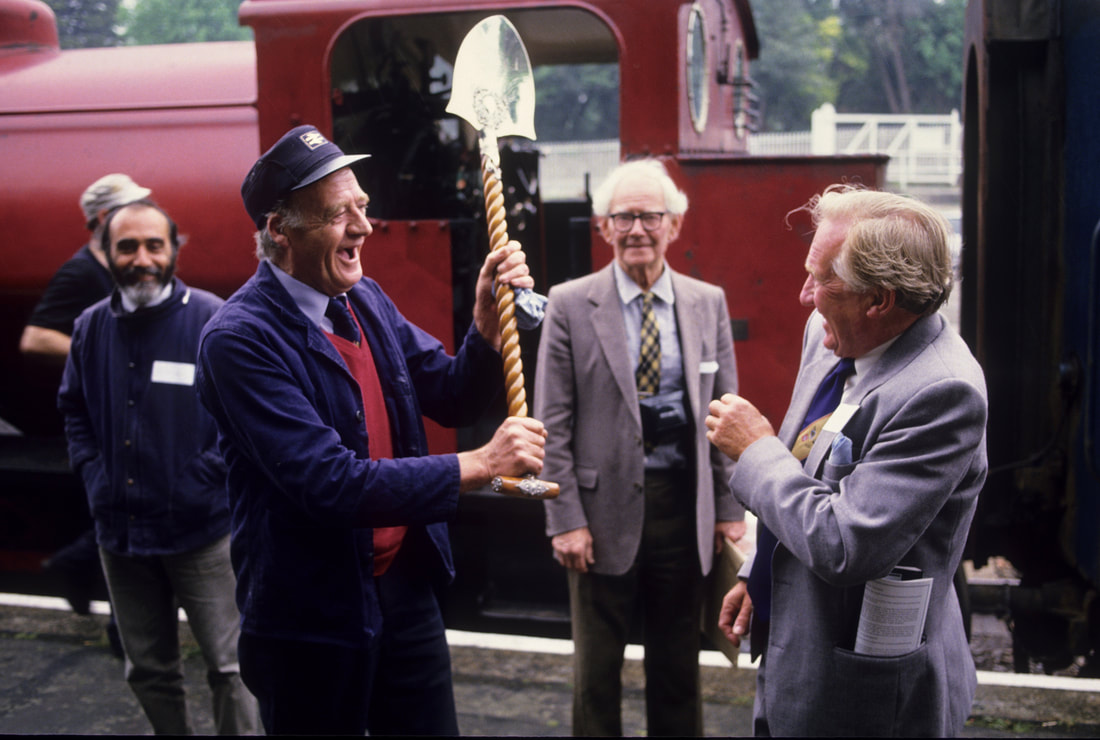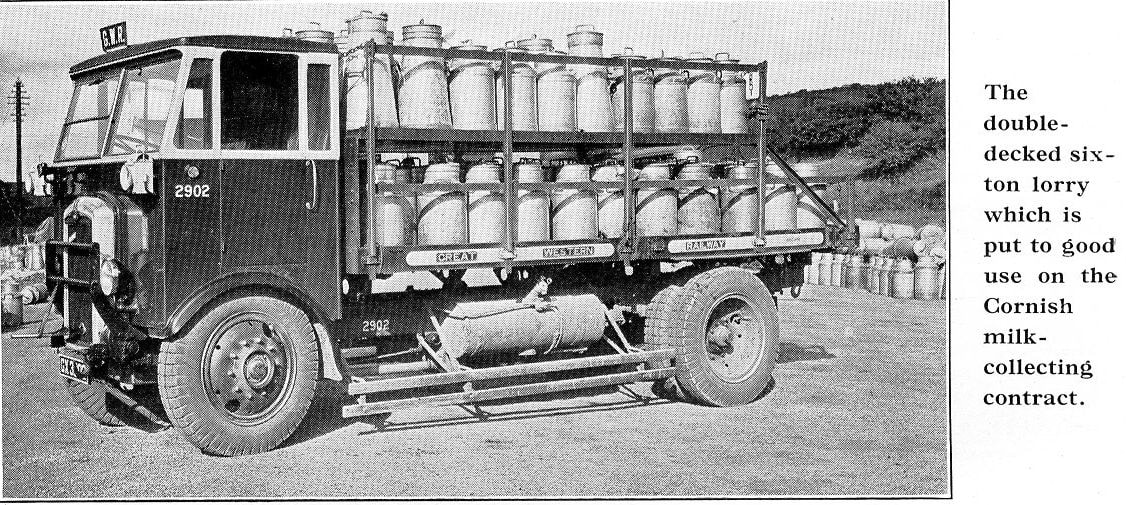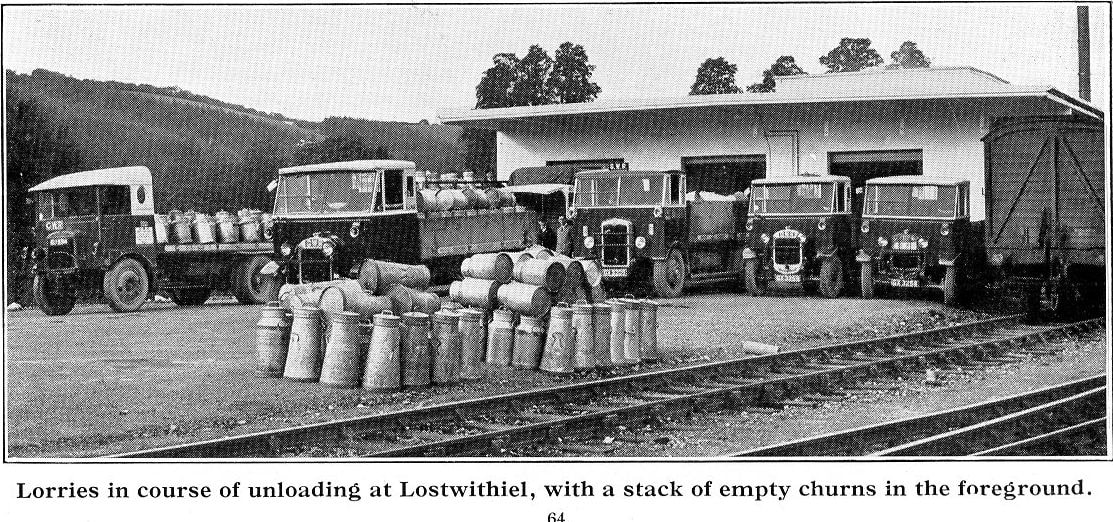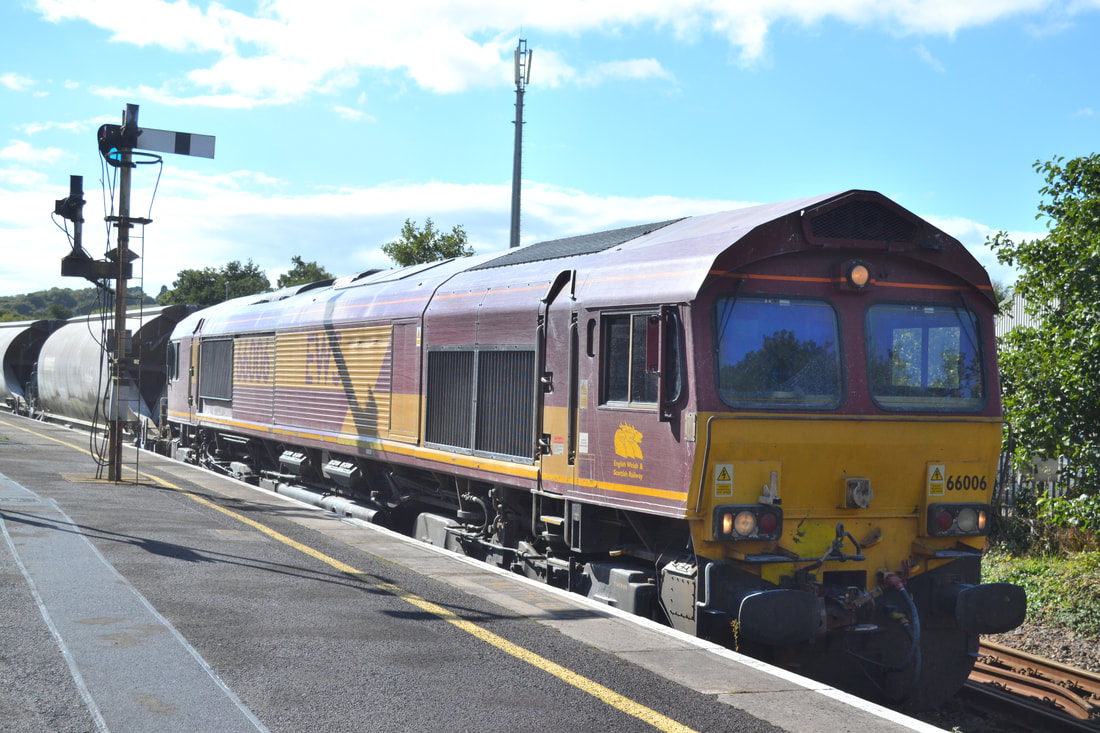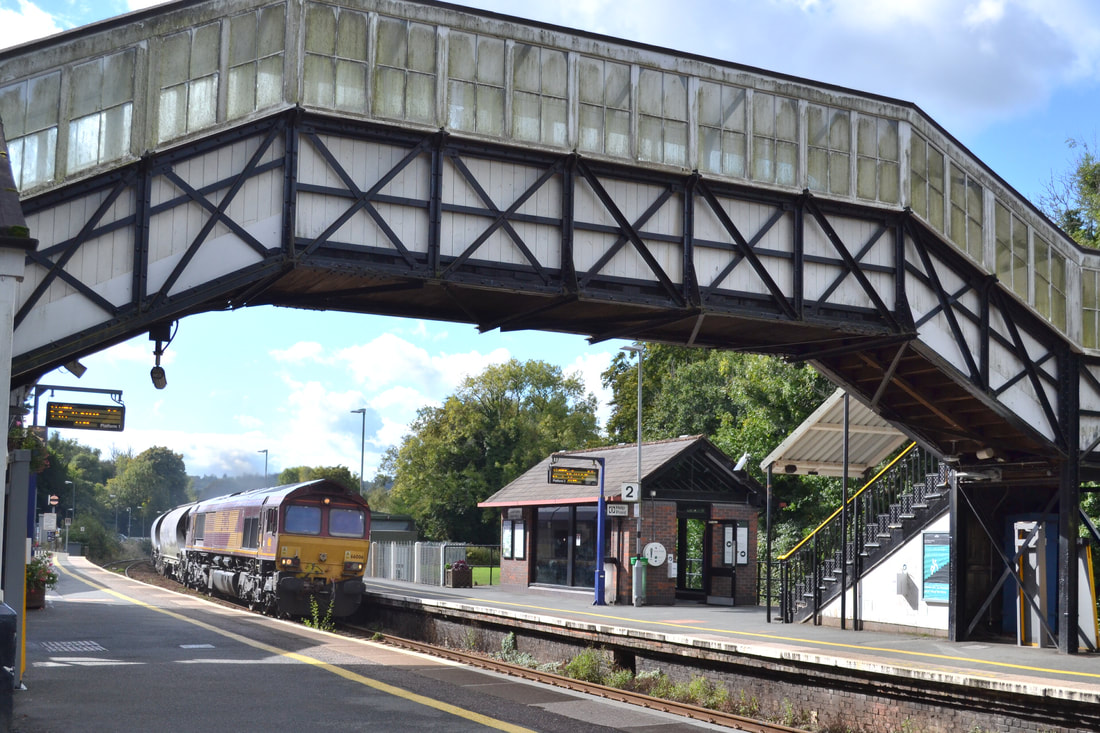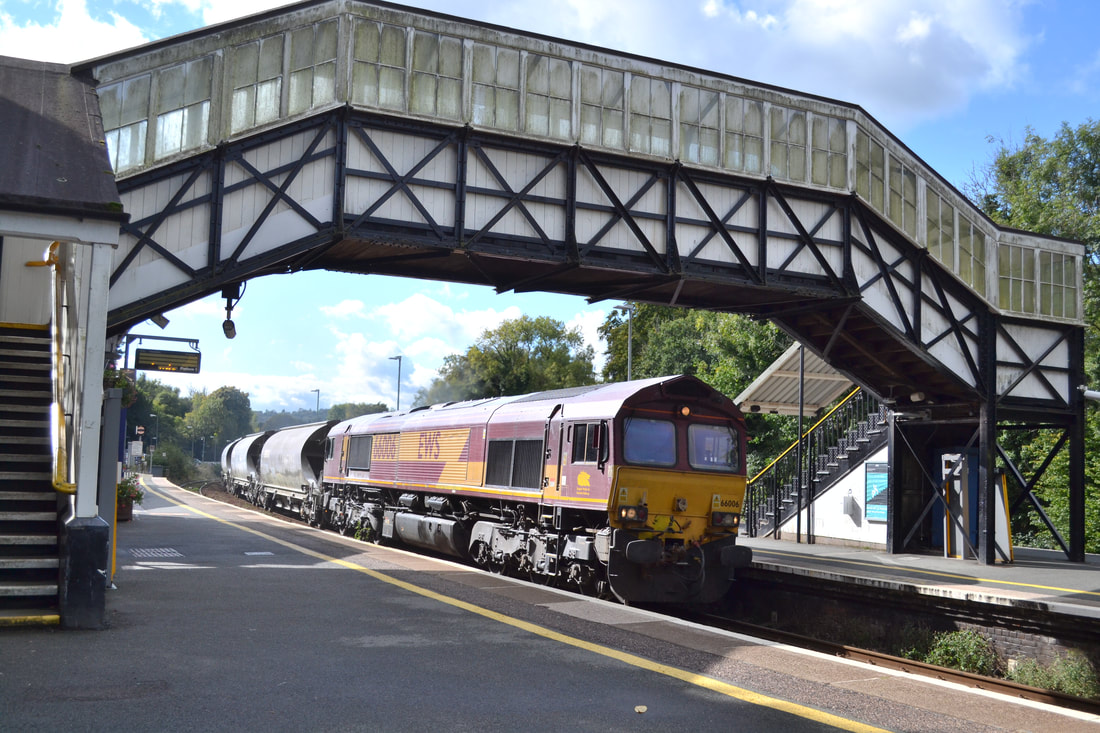Cornish Railways
Jim Collins
My good friend Peter Murnaghan has tipped me off on the latest contributions to your excellent website about my former colleague Rusty Eplett. I thought I would share some more background.
I worked alongside Rusty after I was appointed to the role of Area Manager Plymouth in October 1984 and we had a good working relationship. I also attended the Cornish Railways Board meetings that were held at John Keay House, the head office of English China Clays (ECC). At that time I was still responsible for both the Gunnislake and Looe branches and the stations and signalling to Liskeard. Both branches were crewed from Plymouth Laira too. My lovely wife Gail was Rusty’s secretary at Truro during the creation of Cornish Railways and has plenty of tales to tell of that time working with him and the characters working there at the time.
The Cornish Railways Board meetings were chaired by Paul Witter who was the Western Region (WR) Assistant General Manager. I hadn’t been in Plymouth very long when it became apparent that rationalisation of the Areas was being considered in preparation for the arrival of the business led Sectorisation and in a further push to reduce operating costs. All the WR Area Managers were summoned to Swindon in June 1985 for an important announcement and I travelled up to the meeting with John Heaton my friend and colleague at Exeter. We were expecting Rusty to be on the same train but he wasn’t to be seen. John and I knew that big change was coming but wrongly assumed that the Exeter and Plymouth Areas would be merged and Cornish Railways would survive having been established so recently. I assumed that as the junior AM my brief time in the role was over. Much to our surprise Rusty was already in Swindon when we arrived, but unusually was not saying too much. When the announcement came Bob Poynter , the Regional Operations Manager announced that the Exeter area would not extend west and that Plymouth and Cornish Railways would be merged. At that point I still thought my time as AM was over. We travelled back west on the train together and Rusty admitted he had been summoned to Swindon the day before to be told that Cornish Railways was being merging into Plymouth and he was clearly not happy about it. I left Rusty to carry on to Truro and unbeknown to me he went straight down to the BBC Radio Cornwall studio and told everybody listening that Cornish Railways was being closed. You can imagine this was misinterpreted by many as the railway being closed west of the Tamar. Rusty was quickly summoned back to Swindon to see the General Manager to explain why he had done such an ill advised interview. I don’t know exactly what happened at that meeting, but I can imagine!
The next I heard was that Rusty was ‘retiring’ and I was instructed not to speak to the media and not to ask too many questions. Well I didn’t and as the weeks passed I heard via the grapevine that Rusty was leaving the following week.At that point I rang my boss, Bob Poynter, to ask what the hell was going on and who was going to be managing Cornish Railways from next week. He laughed and said haven’t you guessed. I said no and he replied its you you fool! I said thank you very much for giving so me much notice and he sheepishly said that he thought I already knew. I asked what was my remit and was told to look after Cornwall but close the office down in Truro and bring the work to Plymouth. This took some time and my deputy David Langton covered much of my work in Plymouth whilst I found my way around Cornwall meeting the staff and preparing the move. The move took place on Monday 26 May 1986 and I became Area Manager Plymouth and Cornish Railways. Paul Witter the mentor of Rusty and Cornish Railways ‘retired’ around the same time as Rusty having significantly overspent on the GW150 celebrations budget that in the event didn’t really go too well.
I didn’t see Rusty very often after his retirement but he was a guest at the 100th anniversary of the Bodmin General branch on the 27 May 1987. In this picture Don Lee the Local Departmental Committee Chairman of the Laira drivers is seen accosting Rusty with the ceremonial shovel before driving the special train up to General and down to Boscarne Junction and across the level crossing as far as we could go. Rusty had no doubt made some rude comment about Laira drivers to Don who was a wonderful Great Western man and one of the very best railwaymen I had to pleasure to work with.
I will tell the Society more when I come and talk to you all on the 18th February 2024.
Part 1
Michael L. Roach
The Origins of the Lostwithiel Milk Depot
Milk had been transported in churns since the earliest days of railways usually into the nearest town or city In the 1920s there was a step-change in the quantities being carried by the introduction of bulk milk tanks on 4-wheel chassis, soon changed to 6-wheel chassis. The tanks were glass-lined and belonged to the milk companies while the rail chassis belonged to the four mainline railway companies. London needed fresh milk in huge quantities and was the principal destination for the bulk rail tanks. In 1932 the GWR was able to boast that it was sending milk to a couple of depots in London from a large number of loading points on the GWR system at: Bason Bridge, Carmarthen, Chippenham, Frome, Hemyock, Lavingtion, Lostwithiel, Melksham, Thorney Halt, Whitland, Woooton Bassett and Yetminster. More loading points would be added later in the 1930s, including in Cornwall:- Camborne, St. Erth and Saltash. The first loading point in Cornwall was at Lostwithiel opened in 1932 by the Nestle Company an Anglo-Swiss Company founded in 1866. Later a milk processing factory was built alongside the rail loading point at Lostwithiel. At Camborne the milk factory was constructed a mile away from the rail loading siding. Sixty years later there was too much capacity in the milk industry and both Camborne and Lostwithiel plants were dismantled and sold abroad. The Lostwithiel plant went to Mexico and Camborne to Australia. Saltash had closed earlier and St Erth closed later. No milk has left Cornwall by rail since 1980 but it is believed that large quanties still travel to London by road each day. There are believed to be three large buyers of milk in Cornwall. Davidstow Creamery makes huge quantities of cheese from Cornish and Devon milk. Trewithen Dairies near Lostwithiel bottle milk and make clotted cream, butter and yoghurt; and Roddas at Scorrier are world famous for their clotted cream but also bottle milk for sale locally. The Southern Railway did not stand idly by but was also busy transporting milk by rail from loading points at Torrington, Lapford and Seaton Junction (all in Devon despite the fact that it is more than 65 miles from the first to the third) and places further east on their main line to Waterloo.
To return to 1932 when Nestle's constructed their concentration depot in the station yard at Lostwithiel; the site opened 90 years ago today on 1st October 1932. The GWR were contracted not only to transport the liquid milk to London but also to collect it from the farms and deliver it to the concentration depot, which they did by a combination of road and rail transport.. There were 600 farmers supplying their milk from Lands End to the River Tamar in churns which were collected by 24 lorry routes. The lorries were based at ten different locations in the County and many of the lorries never visited the depot at Lostwithiel but instead they took the collected churns to railway stations like Saltash, Looe and Liskeard where they were put aboard a passenger train for the journey to Lostwithiel. Just imagine how many times a churn from a farm near Looe was handled on its journey to Lostwithiel. Many farmers erected a stand or platform of timber, stone or concrete beside the road at their farm gate where they deposited the churns to be picked up later; and these platforms can still be seen beside the road in places. The use of milk churns faded away in the 1960s and 1970s in favour of bulk tanks both at the farm and on the lorry and the last churn collection was made in 1979. The use of rail transport also faded away and by the late 1970s there were only two milk trains left on the Western Region from West Cornwall and West Wales, both to London. The GWR had once been largest provider of milk trains in Britain. When the new concentration system was started in Cornwall the GWR was collecting 7000 gallons of milk a day for transport to London which filled just two 3000 gallon rail tanks. These were attached to a passenger train departing Lostwithiel at 12.57pm and/or 2.59pm. The balance of 1000 gallons was sent all the way to London in the churns. The original destination of the bulk tanks in London were the Nestle depots at Battersea and Bow. Interestingly on Sundays only the tanks went to the Nestle depot at Trowbridge which made condensed milk. Two other events occurred in the milk industry soon after the construction of Lostwithiel Depot. One was the replacement of the standard conical milk churn by a slightly smaller 10-gallon design with vertical sides; and the other was the formation of the Milk Marketing Board in 1934. The Board successfully carried out its mission until 1994 when it was abolished because it did not accord with Thatcherite principals. The unintended consequence of the abolition of the MMB was that the balance of power in the milk industry shifted from the producers to the supermarkets.
MLR / 29 September 2022
Roger Winnen
